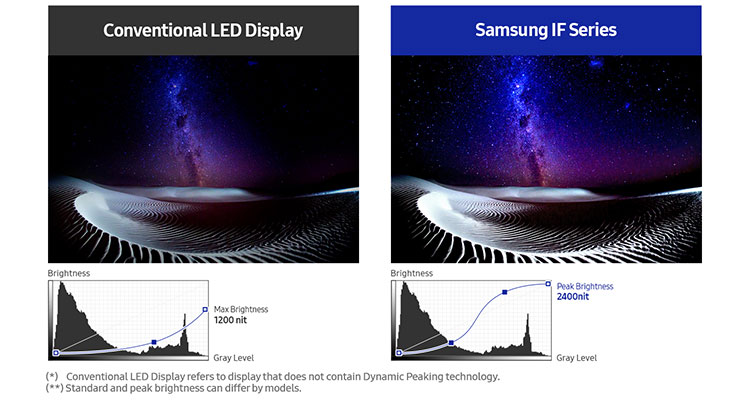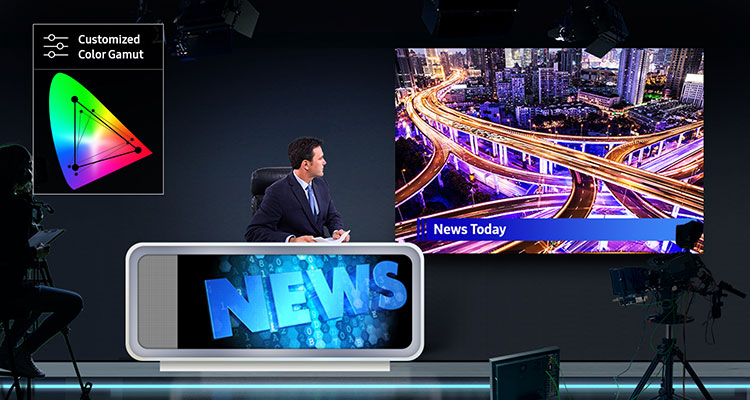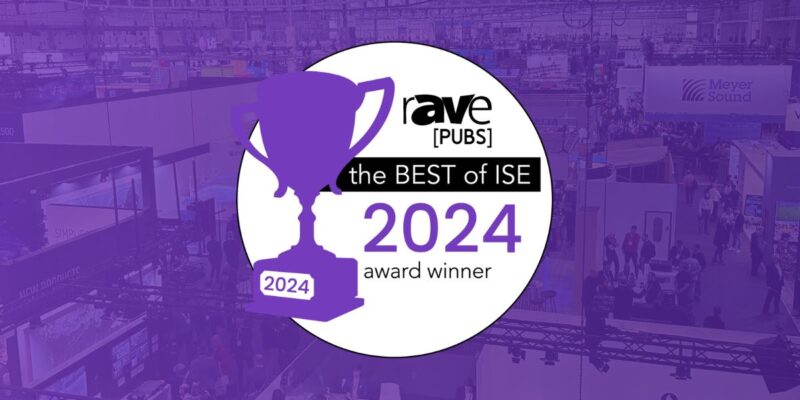LED, LED, LED. Three LED Features That Will Change Signage.
THIS IS A PROMOTED POST – PAID BY SAMSUNG
There’s no question that just adding a digital sign to a retail store or a building’s entrance doesn’t catch anyone’s attention any more. Everyone’s got them now.
So, how do you stand out?
LED are quickly emerging as a go-to source in the battle for customer engagement — especially when wanting bigger, bigger, bigger signs. And, this new generation LED isn’t like the old stuff. Modern LED signage offers exceptional (and seamless) picture quality, infinite signal compatibility and scalability that virtually no LCD can even come close to.
Samsung Electronics, in particular, recently took its LED lineup capabilities to the next level by integrating the High Dynamic Range (HDR) imaging technology — more commonly found in its TVs and large-format displays. Adding HDR capability to LED makes the content pop and significantly increases the contrast ratio. And, more color, to a consumer’s eyes, shows up as more resolution. So what people notice is better imaging and higher-resolution pictures and video!
And, while others may claim HDR-like color, it isn’t HDR unless it’s HDR. Samsung doesn’t just process HDR, but they actually display HDR encrypted content — most other LEDs DO NOT.
While this LED revolution in signage provides opportunity, it can also create confusion for business, as there are all sorts of quality claims along with a plethora of no-name companies entering the signage space with so-called quality LEDs.
What’s the differentiator with Samsung LEDs? Well, here are just three:
Dynamic Peaking
Any indoor environment understands that varying natural and ambient lighting conditions can hinder presentation. These businesses need versatile displays to overcome potential distortion and deliver captivating content at all times.
In turn, dynamic peaking is essential for successful LED display performance. This innovative technology adjusts on-screen content to suit a range of grayscale and environmental settings, and helps business owners overcome common consistency obstacles. “Dynamically peaked” LED displays can reach maximum brightness levels nearly twice as high as that of standard LED offerings, with the P2.0 and P2.5 models of Samsung’s IF Series specifically raising LED brightness to a 2,400-nit peak. The company’s comparable P1.5 model similarly elevates brightness above the 800-nit standard to a 1,600-nit peak. As a result, featured content remains clear, colorful and consistent even against the extremes of white or dark backgrounds.

Color Management
Modern LED displays have advanced to incorporate a wider RGB color gamut than that of their LCD counterparts. This extended depth of shades brings even the most minor visual details to the forefront, and gives content an added layer of immersion. However, despite this extended depth, some LED offerings still struggle to execute against this wider gamut and instead display images with blurry or oversaturated tones. In the most extreme cases, skin colors can appear with an unnatural reddish hue.
To overcome these discrepancies, ensure that your target LED displays include thorough color management technologies. Color management deploys specialized algorithms to ensure consistent RGB gradation and showcase colors with greater precision across all content formats, even those at low grayscale levels. These algorithms also defend against skin representation discrepancies, ensuring that featured subjects appear as intended. Just imagine seeing featured models at their most beautiful in promotional retail content, or newscasters with a lifelike aura that makes it seem as if they are in the room.

And Samsung’s color management is easy for any newbie or AV veteran user to customize and activate. Users can identify, store and activate the native RGB shades that most closely fit their branding and content needs. This instant, easy-to-repeat color deployment rings advantageous for museums, corporate facilities, control centers and other environments that must immediately view and transmit branded content across multiple screens at the highest possible clarity.

Scene Adaptive HDR
This is a biggie as consistency is the foundation of truly effective LED content — as a large image is made up a separate LED tiles butted-up together, one bad tile can throw off the entire wall’s color consistency and uniformity. And, variations in grayscale and brightness levels can deter the delivery of business messaging, or worse, change it.
Scene adaptive HDR technology that can recognize and correct visual irregularities is another LED display feature that will make your investment worthwhile. A combination of several aligned technologies, scene adaptive HDR ensures that all core content maintains consistent elevated brightness and an audience-friendly presentation as the display simultaneously achieves peak brightness.

Specifically, specialized inverse tone mapping algorithms fine-tune contrast within individual frames or scenes in respect to the display’s overall size and the featured content’s brightness. Modern scene adaptive HDR technology also includes a complementary dazzling defense feature that gives viewers’ eyes room to scale as brightness levels shift, and eliminates a common source of visual discomfort brought about by the perceived presence of white or gray color shades. This anti-dazzling feature also reduces brightness in other parts of the screen as brightness rises, delivering a more comfortable and engaging long-term viewing experience.
LED signage technology may be a new endeavor for certain businesses, and it’s possible that decision-makers may not be fully sure how to search for an implement new-age displays in a way that will make a difference. However, the potential of such innovations to attract new audiences and drive sales remains tantalizing. By understanding what LED features will drive the best possible results, businesses can position themselves as true innovators and leverage technology to achieve greater goals.




